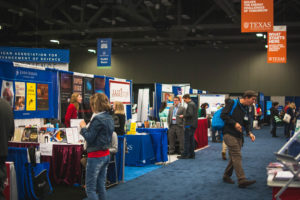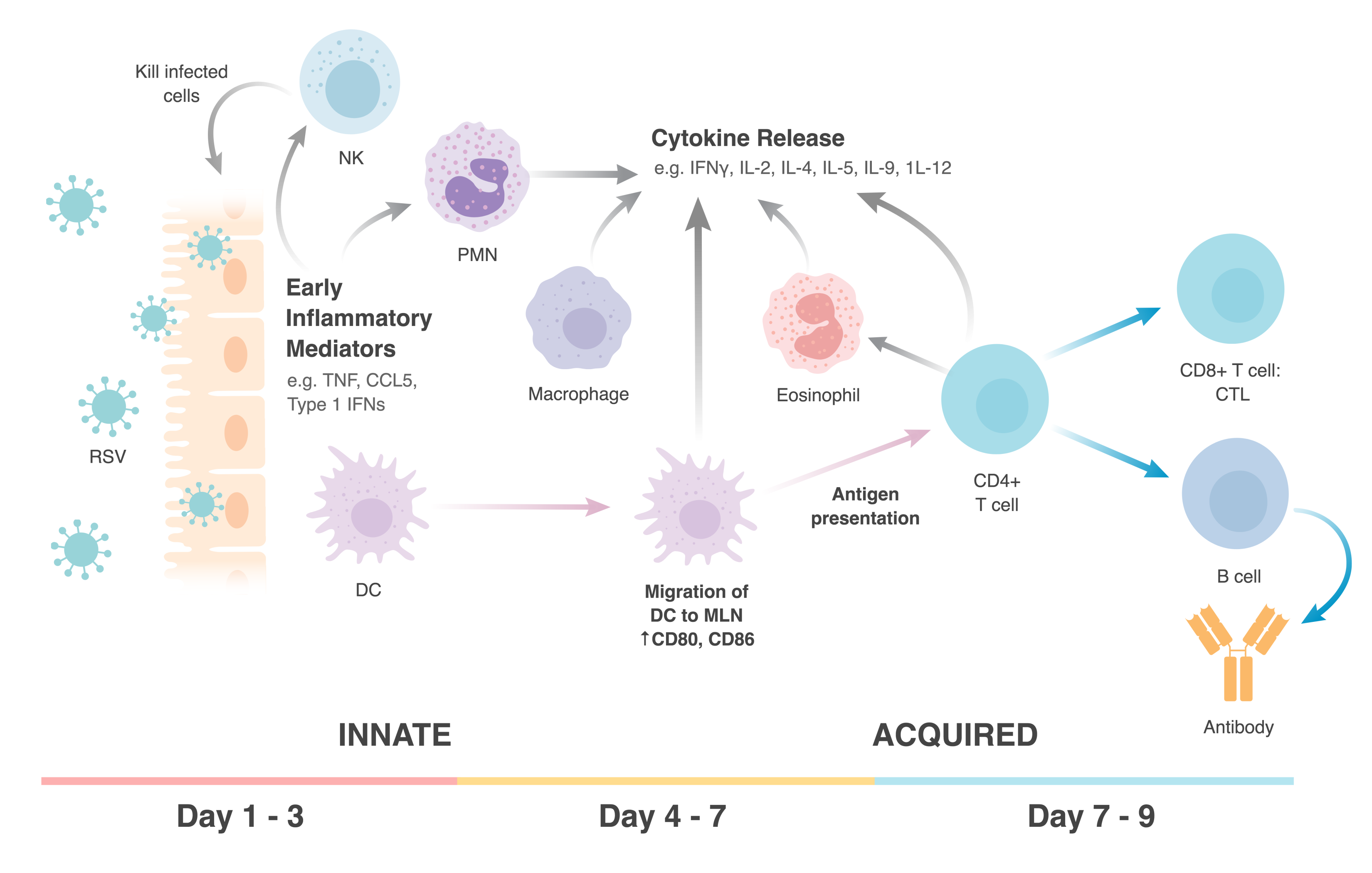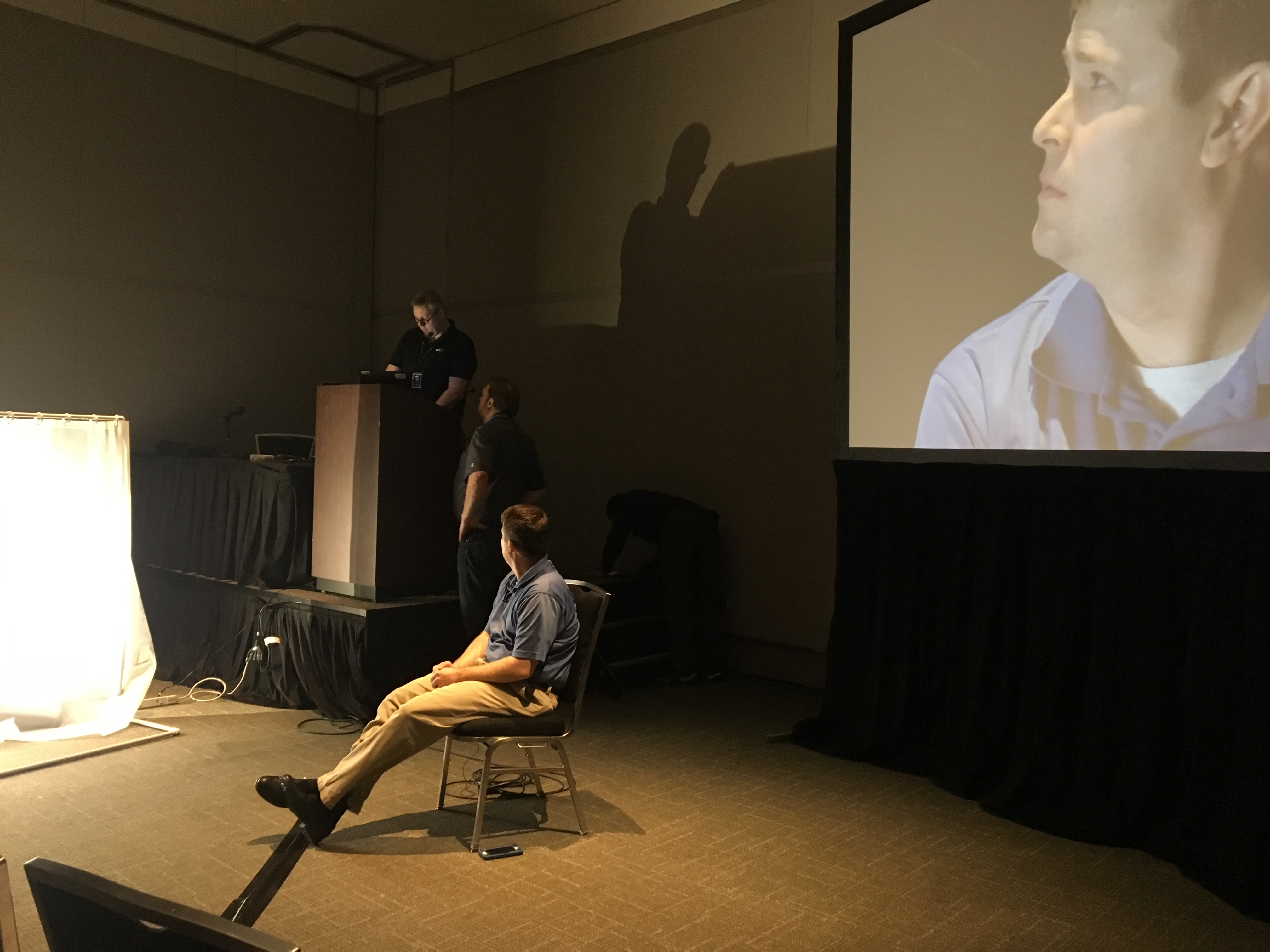The 2018 annual meeting of the American Association for the Advancement of Science (AAAS), held 15–19 February in Austin, Texas, bore the theme “Advancing Science: Discovery to Application” (Figure 1). Not surprisingly, given how discoveries come to be applied, many sessions dealt at least in part with communicating science. The following are highlights of some sessions science editors and those in related fields may find of particular interest. A report on additional sessions will appear in the next issue of Science Editor.

“Trends in Visual Science Communication: Creating Inspiring, Informative Journal Figures”
By Mary Beth Schaefer
When preparing illustrations, as when doing research, scientists should plan carefully. This was the main advice from presenters Shiz Aoki, cofounder of the science illustration tool BioRender, and Savanna Jackson, user interface/user experience (UI/UX) researcher and designer with BioRender, at the session “Trends in Visual Science Communication: Creating Inspiring, Informative Journal Figures.”
In part because most of us are visual learners, images are vital to science communication. However, many figures in papers submitted to journals lack quality. In fact, the presenters said, poor figures are a common reason journals reject papers.
Why are so many figures poor? Scientists face time and resource constraints, and few are trained in design, Jackson observed. She noted scientists spend much of their time carefully crafting an experiment and executing the procedure but generally put less care into creating figures. “Researchers work so hard on their actual science. Why can’t it be presented beautifully?” she asked.
Design process
The presenters gave the following guidance for designing figures:
- To create an effective figure, first determine the purpose, just as when writing an article. The golden rule? Keep it simple. Have the image say one thing and say it well.
- Once the purpose is determined, write a thesis statement for the image. An example: “To highlight the differences in cell surface protein expression that result from 2 types of T-cell activation.” Then, list the key elements needed to achieve the image’s purpose. The presenters recommended using the fewest visual elements possible.
- Next, draw “a sketch—or 10,” keeping in mind the first idea is rarely the best one. Ask a colleague to review a sketch of the figure to see how well it communicates.
Design principles
The presenters also summarized principles of design. Some highlights:
- Minimize “visual noise”—elements distracting from the main message. Aoki noted some design features that have lost favor because they contain visual noise. These features include gradients (instead of flat colors), drop shadows, and stylized text, such as word art.
- Another design consideration is visual hierarchy, meaning what the viewer notices first in an image. For English-speaking audiences, visual elements usually should flow from top left to bottom right. Size, space, and color can draw attention to certain objects, and grouping can show that objects are related. Images also should be unified and consistent. Inconsistencies, such as using an arrow or color in different ways, create visual noise. And misalignment, even if slight, can distract viewers.
- In general, sans serif typefaces look more modern than serif typefaces, but the latter have their place (for example, if a document should look authoritative). And those designing figures need not shy away from big block letters, which can help show readers what is important.
Tools
The presenters noted several tools and resources, including a data-visualization page on the AAAS website (https://www.aaas.org/page/visualizing-data) and Twitter handles such as @iamscicomm. Before closing, the presenters demonstrated how to build a figure using BioRender (https://biorender.io; Figure 2), which has a library of science-related icons.

Such resources can help scientists prepare effective figures despite lack of training and time.
“Developing a Narrative About Your Data”
By Christina B Sumners
The three panelists at this session offered perspectives about the benefits and potential risks of telling stories, or developing narratives, about science. They also shared their experiences doing so and offered suggestions for best practice.
Michael E Webber, professor at the University of Texas at Austin, approached the topic as an academic interested in popularization. He said the “Carl Sagan effect” (the idea that those who communicate science to the public somehow are not “serious” scientists) is indeed real and lamented that, at least historically, such efforts have not counted much in decisions about tenure or awards. To keep people from thinking that someone who simplifies the science for a broad audience does not understand it, he suggested stating up front that what is being said is an oversimplification. Doing so will reassure the experts in the audience while not losing everyone else.
Karen Akerlof, visiting scholar at AAAS and a research assistant professor at George Mason University, described storytelling as so powerful, it’s almost like drugs. “We are social creatures; when we engage in storytelling, it helps bind us to other people,” she said. Whereas our ancestors would gather around the fire to tell stories, computer screens are our modem campfires, she added. Still, the basics have not changed: Good stories are set in a specific time and place, typically have a chronology with specific causations between events, and are populated with archetypal characters. Akerlof noted that highly cited journals tend to have articles with more narrative. She also emphasized why narrative should be important to academics: “If you land in the The New York Times, your citations will go through the roof, and your university will be very happy.”
Joe Hanson, creator and host of the web video series It’s Okay to Be Smart, said the human mind has traits science storytellers can use for good or evil: We love patterns, so much so we will find them everywhere, even in clouds or in craters on the moon. Also, we love stories; we innately think in stories, not in data points. Therefore, “you need to focus on building those stories, and your data is not your story, it’s a character,” he commented. Hanson also stated that the elements of storytelling, such as cliffhangers, can be great for stories about science. However, it’s important to be careful: For example, although good narratives have conflict, to tell the story of how 97% of scientists agree climate change is happening and 3% disagree does a disservice to the situation and general scientific consensus.
To watch a video of this session or of the other two parts of the Communicating Science Seminar, visit the AAAS 2018 Annual Meeting Communicating Science Seminar web page (https://www.aaas.org/page/2018-annual-meeting-communicating-science-seminar).
“Exploring Public Fears and Myths: Vaccine Hesitancy, Food Safety in Fukushima, and Bacteria”
By Jessica Scarfuto
“It’s a communication problem,” said Thomas Hartung of the Johns Hopkins Bloomberg School of Public Health. This was the overarching theme of the three talks in this session. The speakers discussed reasons for public misconceptions regarding vaccines, food safety after the Fukushima nuclear reactor disaster, and the dangers of bacteria. They also discussed what to do to combat such misconceptions.
Hartung began the session by addressing why people tend to believe scientific fallacies on such topics. People receive a constant stream of poor information, misconceptions, and myths from family members, the media, and others, he observed. And although members of the public trust academic experts highly, studies indicate they seem to trust their peers the most. Also, scientists still do not know what causes autism, which has erroneously been linked to receipt of vaccines; thus, room exists for speculation among people looking for answers.
Miyoko Watanabe, senior executive of the Japan Science and Technology Agency, shared similar insights regarding public mistrust of food from Fukushima after the 2011 nuclear reactor disaster. Fukushima is famous for producing tomatoes, rice, peaches, and cucumbers, but after the nuclear disaster caused fears of radioactive contamination, members of the public worried the food might not be safe to eat.
“Unfortunately, the scientists caused public fear,” Watanabe stated, saying the situation was poorly handled. The Japanese people apparently thought scientists could predict earthquakes, but the earthquake leading to the disaster was unpredicted. Scientists had also assured the public that nuclear power plants had very good safety systems in place, but the Fukushima plant did not. The resulting mistrust has been very difficult to rectify: Radiation levels have been rigorously measured throughout the region and multiple reports have confirmed the food is safe, but still the industry is suffering financially.
The last speaker, Catherine Buckley of University College Cork in Ireland, kicked off her talk by dropping a doughnut on the floor. There was groaning and somebody yelled “5-second rule!” but Buckley had a purpose for what seemed to be an act of clumsiness. “How many of you would have eaten that doughnut?” she asked. “And of those who said no, how many are scientists?” Buckley went on to note that the age-old 5-second rule lacks any validity but that not all bacteria are bad. In fact, she said, very few bacteria are pathogenic at all, and if we do not change our use of antibiotics, the number of deaths from antibiotic-resistant infections could rise to 10 million people per year by 2050, exceeding the annual number of cancer deaths.
So what can be done to counter such myths? As Hartung put it, “Scientists need to leave the ivory tower.” With more transparency and social media communication, the speakers indicated, scientists can help ensure the public sees accurate information rather than the pseudoscience rampant on much of the Internet.
“What Citizens Think About Science: Survey Data and Implications for Communicators”
By Rachel Hoyle
At this session, speakers from the United States and United Kingdom discussed survey findings regarding public views of science. The first speaker, John Besley of Michigan State University, said attitudes toward science are positive and stable according to the Science and Engineering Indicators (a National Science Foundation report based on the General Social Survey, in which 3,559 face-to-face interviews were conducted in the United States). Most respondents agreed science is necessary, solves problems, and provides more benefits than harms. Moreover, respondents indicated they trusted scientific experts more than any other group about medical information, climate science, and the potential health risks of genetically modified foods.
Peter Muhlberger of the National Center for Science and Engineering Statistics, which developed the Science and Engineering Indicators, presented additional findings. He noted that when survey questions were worded to avoid triggering personal beliefs, Americans’ responses resembled those from people in other countries.
Ethan Greenwood of the Wellcome Trust, Nick Allum of the University of Essex, and Patrick Sturgis of the University of Southampton offered findings from the Wellcome Trust Monitor (a survey involving face-to-face interviews with 1,179 adults and 374 youths in the United Kingdom). In the survey, more education—and consequently, higher socioeconomic class—was associated with greater science efficacy (that is, more factual information and understanding). The survey respondents reported they obtained most of their science information online; disparities by class or education did not seem to exist in this regard.
Cary Funk of the Pew Research Center presented highlights of the center’s findings. She said the findings suggest that social and entertainment media are ways to reach beyond the active consumer of scientific information.
Based on the generally favorable survey results, Besley recommended a “less negative” stance when communicating science. Instead, he said to “articulate the great fortune we have to be in the scientific community.”
“Shooting Science: How to Design and Film Great Interviews”
By Cat Jackson
Filming a professional-grade interview can be daunting, but with new technology and some creativity, it is possible even without much experience, said Theo Lipfert, director of the School of Film and Photography at Montana State University. At this session, Lipfert discussed, and demonstrated with some of his graduate students, the three elements of a compelling filmed interview: lighting, audio recording, and interview technique (Figure 3).
Harsh fluorescent lighting is common in many workplaces, but it is unsuitable for filming. Lipfert stated, “Your mission is to control the light.” He recommended turning off the lights, if possible, and using your own—a lighting rig can be constructed for less than $100.

Also, some new gadgets, or simply black or white foam board, can be used to adjust the light.
Regarding audio quality, Lipfert commented that the number-one way to seem amateurish is to have the microphone visible. Too much sound pickup from the environment is another problem. One tip Lipfert offered was to run the lavalier microphone cord down the shirt of the wearer. Also, new software and hardware can improve sound quality, even when recording on an smartphone.
Lipfert also presented some interviewing tips: Let interviewees know that they should ignore the camera, that they can restate something if they wish, and that you will take longer-than-normal pauses to make editing easier. Lipfert further advised having the interviewee sit on a hardback chair, asking the interviewee to wear contacts instead of glasses if possible, and removing noisy jewelry. If the interviewee is long winded, Lipfert politely requests, “That was great. Could you say that in 2 sentences?”
“Best Practices in Communication and Outreach at Laboratories and Facilities”
By Barbara Gastel
This session centered on Communications and Outreach for Science Laboratories and Facilities: Best Practice Advice for Directors, CEOs and Communications Managers (https://www.interactions.org/bestpractices), a document from the Interactions Collaboration, which offers guidance for major particle physics laboratories internationally. The Collaboration has overseen peer reviews of communications and outreach at scientific institutions; the recommendations in the document emerged in part from these reviews.
The main author of the document, Terry O’Connor of the Science and Technology Facilities Council, United Kingdom, spoke first. He warned against assuming communication is effective. He then presented the document’s recommendations: articulating and publishing the laboratory’s vision and mission, having a comprehensive strategic communications plan, expressing a consistent and honest message, maintaining a close connection between management and communications leadership, ensuring budgets and structures reflect institutional objectives, understanding and prioritizing audiences, and challenging assumptions on internal communications.
Timothy Meyer, chief operating officer of Fermi National Accelerator Laboratory (Fermilab), discussed having experienced the peer reviews twice: first at the Canadian national laboratory TRIUMF and then at Fermilab in the United States. Meyer obtained the reviews shortly after arriving at the laboratories in order to both enlist external expertise and build cohesion with his team. After noting gaps the reviews uncovered, he mentioned the Fermilab review led to the laboratory’s using its 50th anniversary as a way to reach new audiences.
Finally, Anne-Muriel Brouet of Ecole polytechnique fédérale de Lausanne, Switzerland, spoke from the perspective of a communications professional. She said she now sends news releases to all reporters on her list, rather than targeting subsets, as journalists prefer to decide for themselves what to cover. Also, rather than using a spokesperson, she has reporters speak directly to scientists. The scientists, however, receive guidance beforehand.
The question-and-answer period that followed included discussion of internal communications. It was noted that, because not all employees are office based, some messages should go out by multiple channels rather than only email. It was also noted that internal communications must be two way.
Topics of other communication-related sessions at the AAAS annual meeting included science fairs, social media, and fake news. For additional coverage, please see the next issue of Science Editor.
Mary Beth Schaefer is a health care research editor-writer at IBM Watson Health; Christina B Sumners is communications coordinator at the Texas A&M University Health Science Center; Jessica Scarfuto is an assistant lecturer at Texas A&M University; Rachel Hoyle and Cat Jackson are graduate students studying science writing and science editing at Texas A&M University, where Barbara Gastel teaches these subjects.
